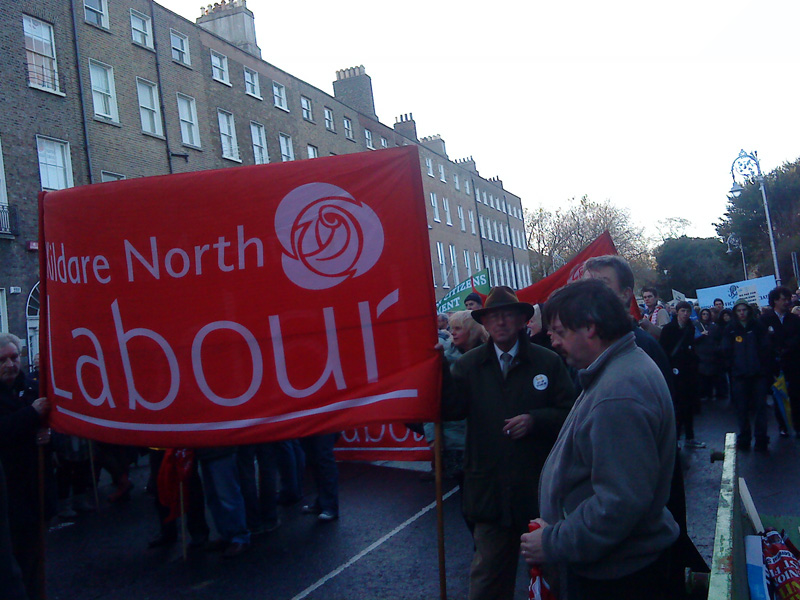Tens of thousands of people: public sector and private sector workers and their families, unemployed workers, pensioners and students thronged the streets of eight cities in the south on Friday, November 6; while 10 further demonstrations took place in the north also. 70,000 marched into Merrion Square in Dublin, 20,000 in Cork, 10,000 in Waterford, 6,000 in Galway, 5,000 in Sligo, 5,000 in Limerick, 4,000 in Tullamore and 1,500 in Dundalk. Not bad for a Friday with a grim weather forecast.
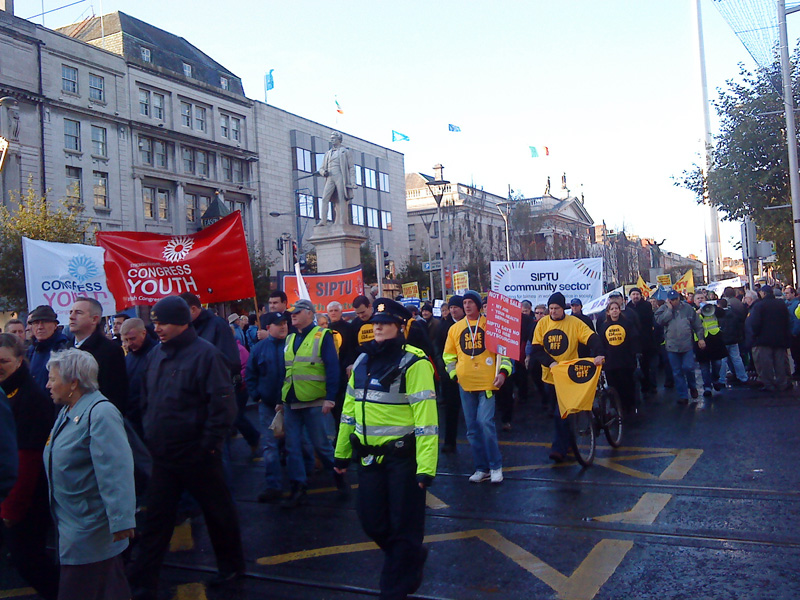 When you see the organised workers movement on the march one of the first things that is obvious is the mixture of people, young, old, from different places and different backgrounds, reflecting the changes in Irish society in the recent past. It’s the common struggle that unites people and why the struggle against these wage cuts and job losses touches far more than the public sector workers themselves. There is no brick wall between the public sector workers and the private sector. How many couples work one in the public sector and one in the private for example?
When you see the organised workers movement on the march one of the first things that is obvious is the mixture of people, young, old, from different places and different backgrounds, reflecting the changes in Irish society in the recent past. It’s the common struggle that unites people and why the struggle against these wage cuts and job losses touches far more than the public sector workers themselves. There is no brick wall between the public sector workers and the private sector. How many couples work one in the public sector and one in the private for example?
Demonstrations like this bring the masses into political action. When the masses enter the stage of history then history can be radically changed.
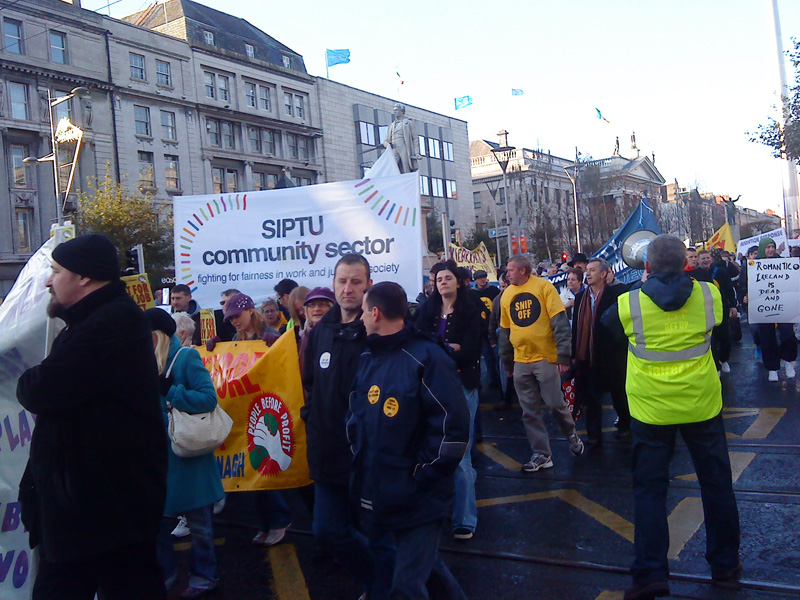 The public sector in Ireland employs over 300,000 workers. With their families, that makes up probably 25% of the population at the least. That’s the reason that the struggle of the public sector workers is so important. If these workers can defeat Cowen and Lenihan’s plans then it would represent a big victory. That’s the best way to win over the private sector workers, or rather to win over the ones who don’t support the public sector workers already.
The public sector in Ireland employs over 300,000 workers. With their families, that makes up probably 25% of the population at the least. That’s the reason that the struggle of the public sector workers is so important. If these workers can defeat Cowen and Lenihan’s plans then it would represent a big victory. That’s the best way to win over the private sector workers, or rather to win over the ones who don’t support the public sector workers already.
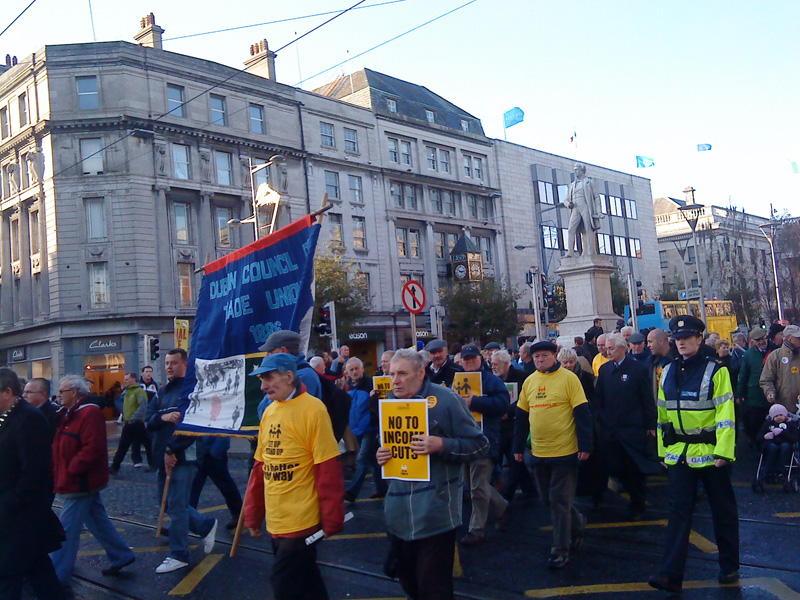 If you read or listen to the mouth pieces of the bosses and the Fianna Fáil you realise that in truth they are only “putting on the poor mouth”. The attempt to divide the workers one from another is just a way to make the workers pay for the crisis. Its the bosses crisis, they should be made to pay for it, not us. The best of the private sector workers will be pointing out the same argument to the people they work with and their families as well. Ultimately this policy will rebound on the bosses. But it could rebound on them much more quickly if the union leaders learn the lessons of this series of demonstrations.
If you read or listen to the mouth pieces of the bosses and the Fianna Fáil you realise that in truth they are only “putting on the poor mouth”. The attempt to divide the workers one from another is just a way to make the workers pay for the crisis. Its the bosses crisis, they should be made to pay for it, not us. The best of the private sector workers will be pointing out the same argument to the people they work with and their families as well. Ultimately this policy will rebound on the bosses. But it could rebound on them much more quickly if the union leaders learn the lessons of this series of demonstrations.
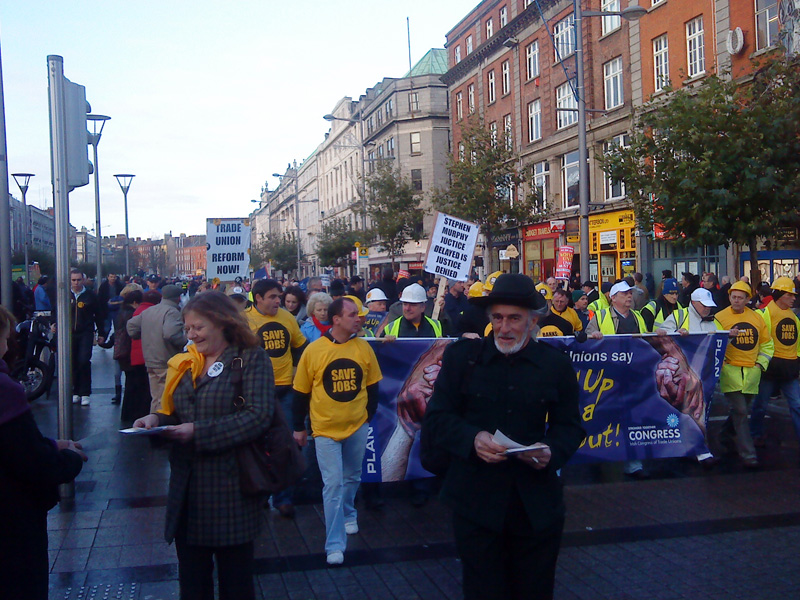 More or less the same number of workers took part in this day of action as took part in the February demonstration on the Saturday. There’s been a huge shift in workers attitudes since then. The workers are ready to fight to defend there interests. The biggest obstacle in this struggle is the short sighted perspective of that section of the trade union leadership who are prepared to settle for less than enough. For sure, the trade union leaders were on form today, but what will they be thinking when it comes to Monday morning when they are sitting reading the views of the hired lackeys of the Fianna Fáil and IBEC?
More or less the same number of workers took part in this day of action as took part in the February demonstration on the Saturday. There’s been a huge shift in workers attitudes since then. The workers are ready to fight to defend there interests. The biggest obstacle in this struggle is the short sighted perspective of that section of the trade union leadership who are prepared to settle for less than enough. For sure, the trade union leaders were on form today, but what will they be thinking when it comes to Monday morning when they are sitting reading the views of the hired lackeys of the Fianna Fáil and IBEC?
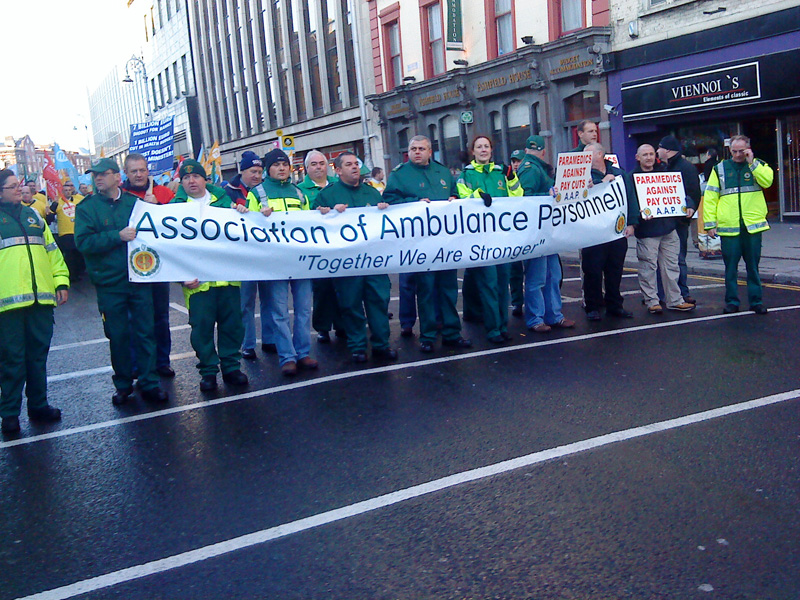 The bosses cultivate this type of slow sustained pressure from so called “public opinion” because they and the so called “Soldiers of Destiny” in the Oireachtas understand that they can get away with murder in the name of “Social Partnership”. But confronted with a militant united workers movement then they would be completely suspended in mid air.
The bosses cultivate this type of slow sustained pressure from so called “public opinion” because they and the so called “Soldiers of Destiny” in the Oireachtas understand that they can get away with murder in the name of “Social Partnership”. But confronted with a militant united workers movement then they would be completely suspended in mid air.
For socialists and trade union activists in Ireland the next step has to be:
- Keep up the pressure on the trade union leaders: Make the bosses pay for the crisis
- Make the 24th of November into a twenty four hour general strike!
November 6, 2009
